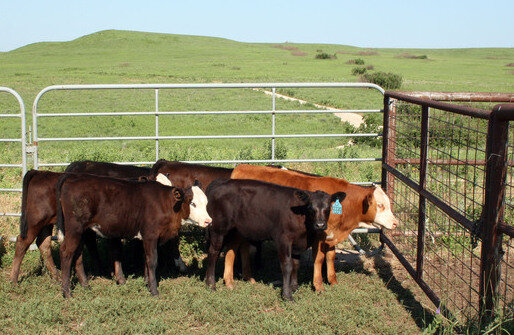
In a low stress weaning plan, calves are able to see their dams through the fence. | Download this photo.
K-State beef cattle experts discuss weaning strategies
Recent podcast focuses on making transition as smooth as possible
September 15, 2020
MANHATTAN, Kan. — As with the changing of the seasons, September brings forth a time for weaning spring-born calves.
“Our goal as producers is to make the weaning of calves from the cows as smooth of a transition as possible,” said Brad White, K-State veterinarian and director of the Beef Cattle Institute.
Weaning strategies was the topic of discussion during a recent BCI Cattle Chat podcast.
“The first step in planning for weaning is to re-evaluate what has been done in the past, noting what worked best from a labor and facilities standpoint,” said veterinarian Bob Larson, who encourages producers to do a walk-through of the facilities and pens before moving cattle.
K-State Research and Extension beef cattle specialist Bob Weaber said producers need to check fence lines and prepare pastures by mowing down weeds that might interfere with hotwire fences, or cause eye irritation in the calves.
In checking facilities, the experts recommend that producers pay special attention to water access for newly-weaned calves.
“Water is the most important nutrient, so you’ve got to make sure they can reach it,” Larson said.
White said producers may need to add in a water tank to the pen for the calves that have been drinking from ground water sources such as creeks or ponds.
For those who provide water to the cattle through a frost-free cattle waterer with a lid and ball, Weaber suggested removing the lid so the calves can see and smell the water easier as they walk by.
Larson noted that producers should consider a low-stress weaning option.
“To ease the stress on the calves, this option allows for separation from the dams by a fence so that they can see each other across the fence,” he said. Once the cow and calf have made it through that transition, then producers can begin altering the calf’s diet, Larson said.
The traditional weaning protocol is to separate calves from the cows by moving them to a new location on or off the farm. “The bottom line is that producers need to match the weaning plan to what works best for their operation in respect to both time and resources,” White said.
To hear the full discussion on weaning strategies, listen to the BCI Cattle Chat podcast.

